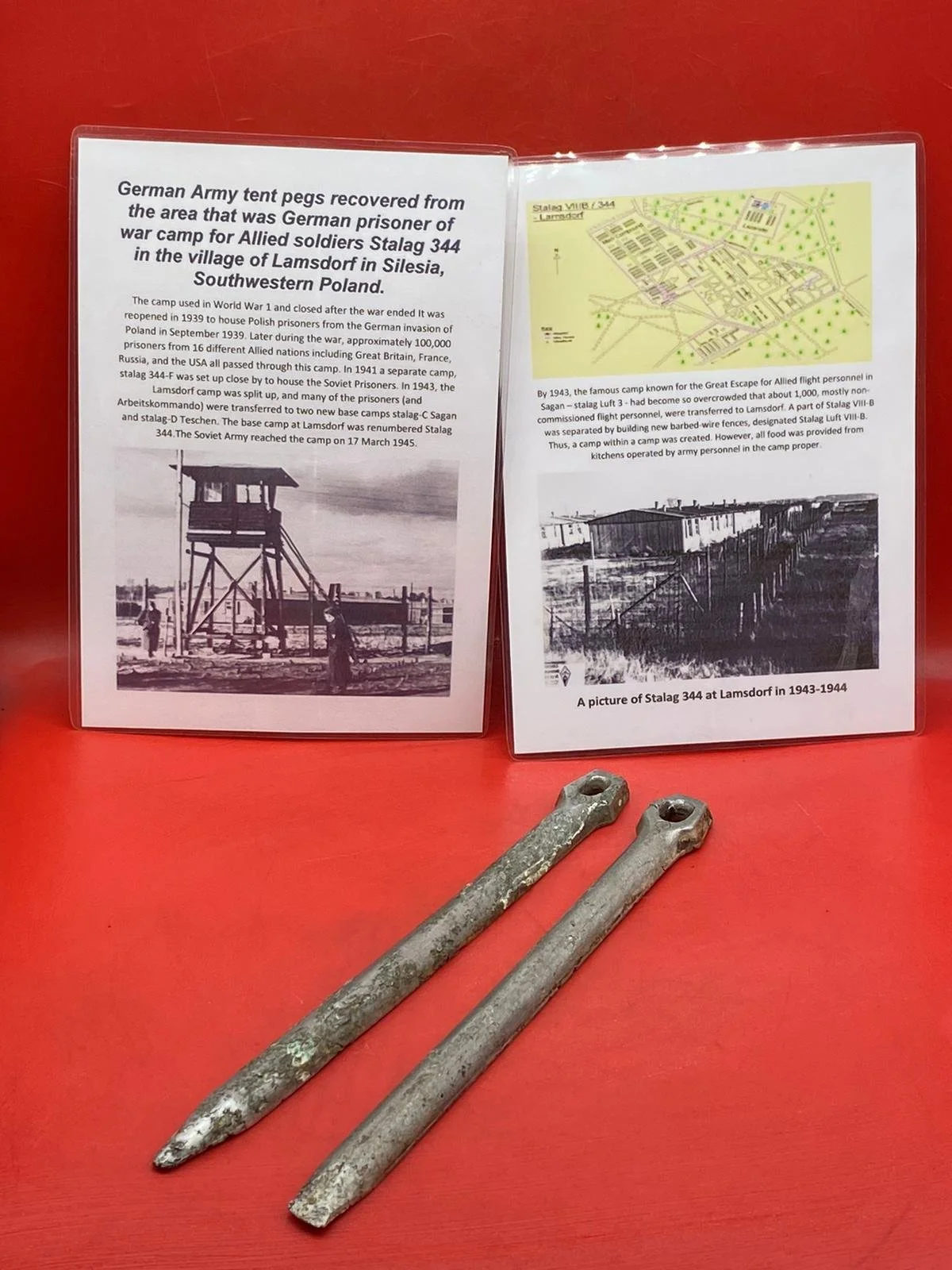 Image 1 of 8
Image 1 of 8

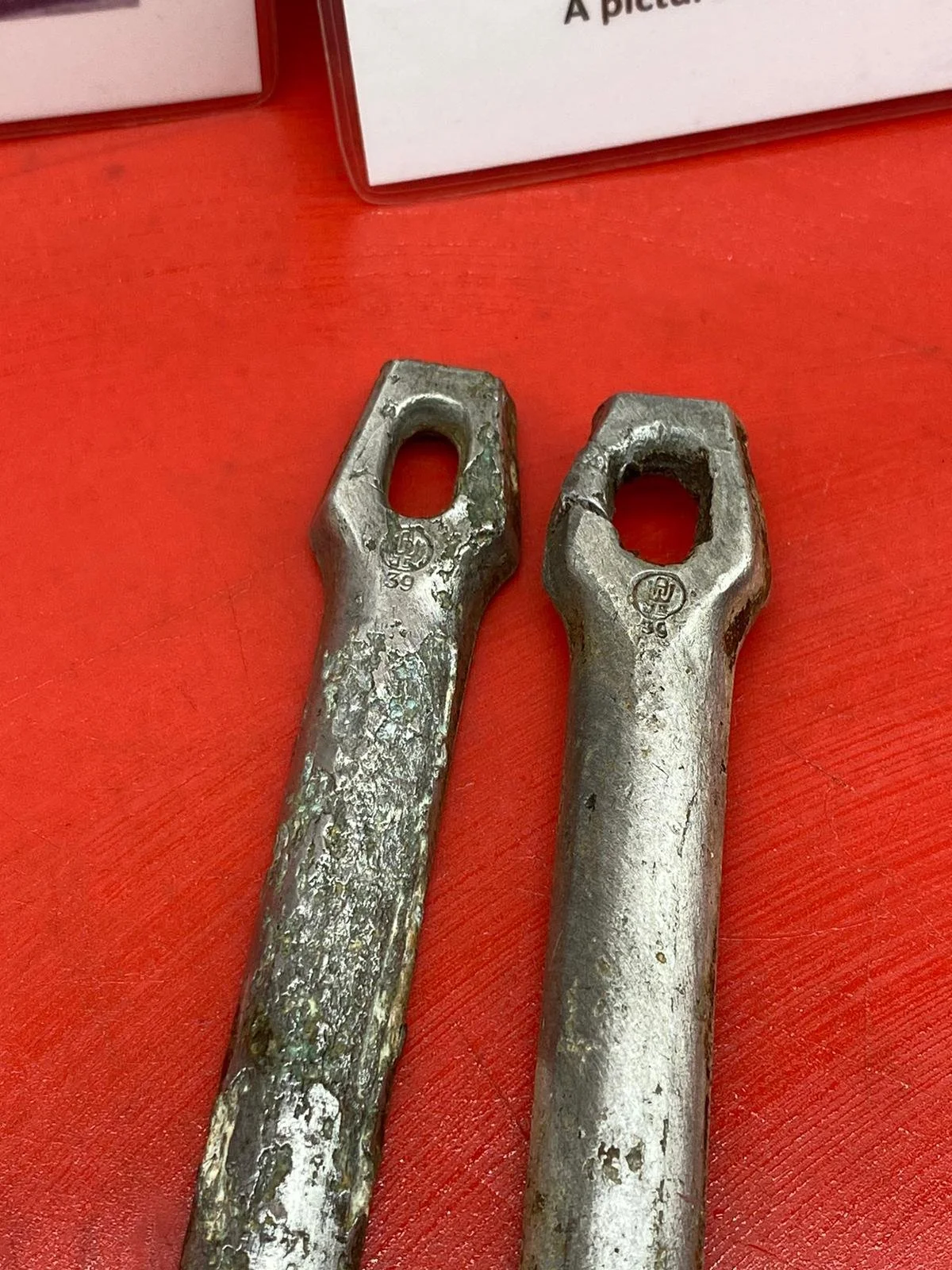 Image 2 of 8
Image 2 of 8

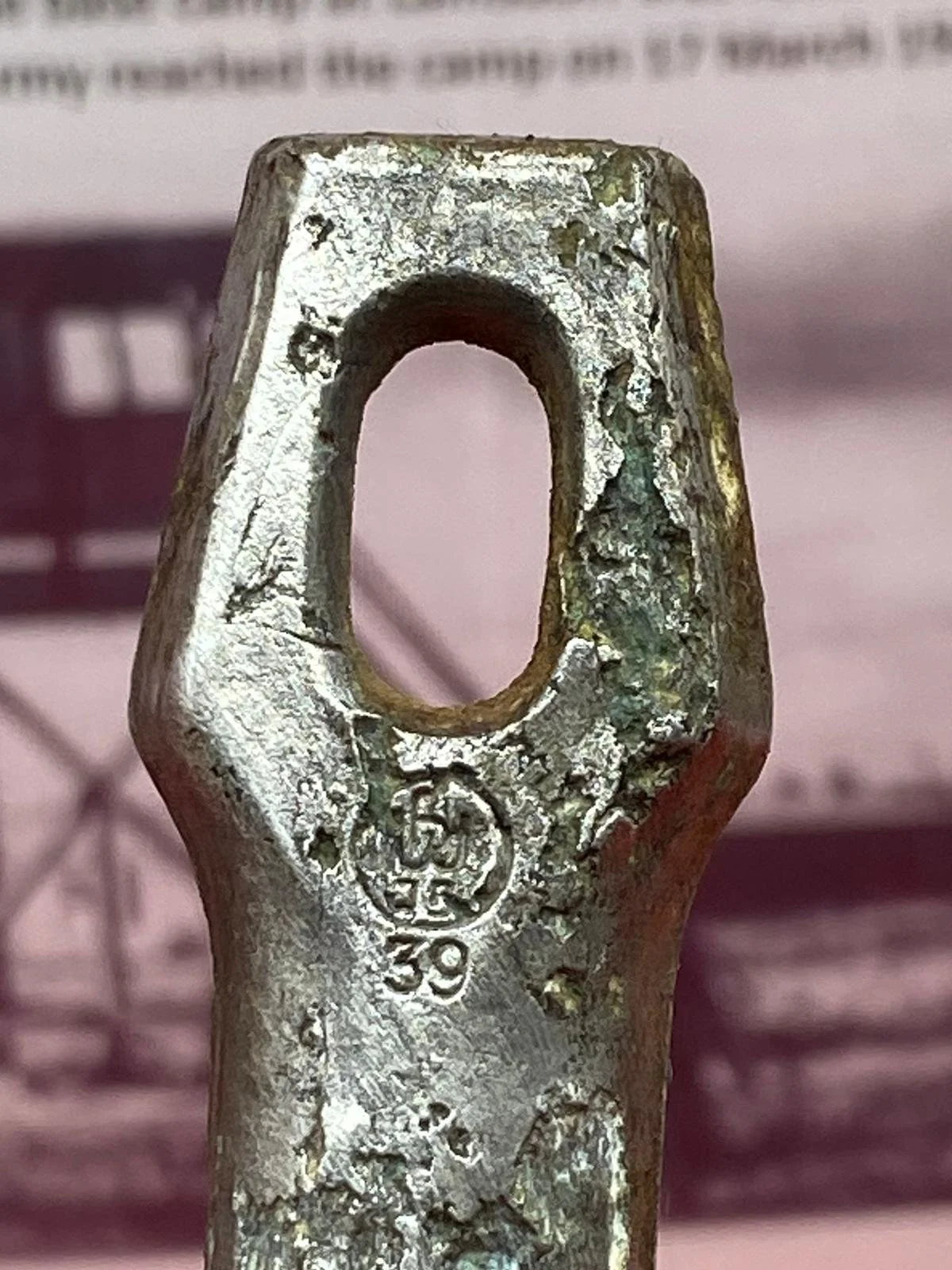 Image 3 of 8
Image 3 of 8

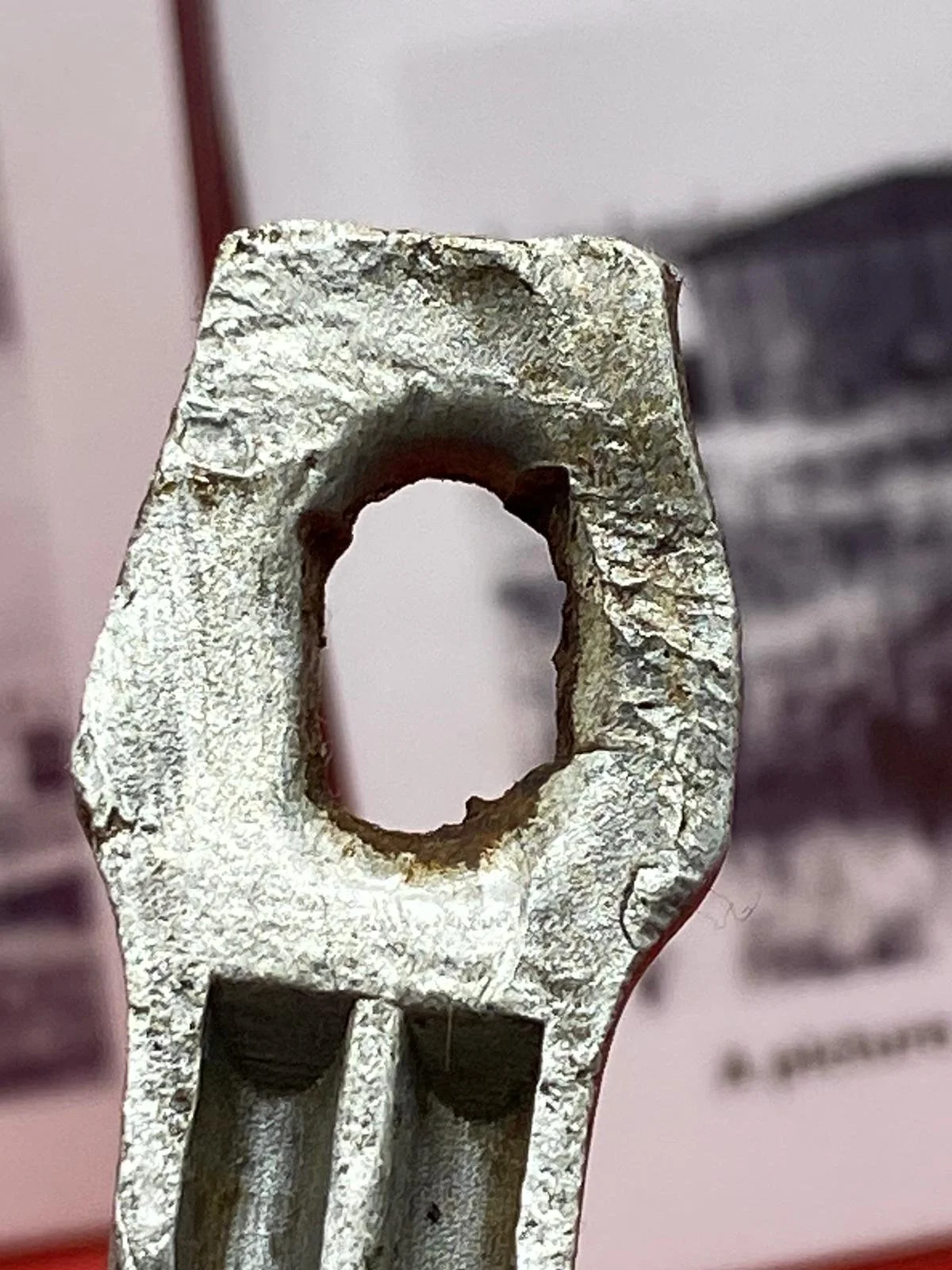 Image 4 of 8
Image 4 of 8

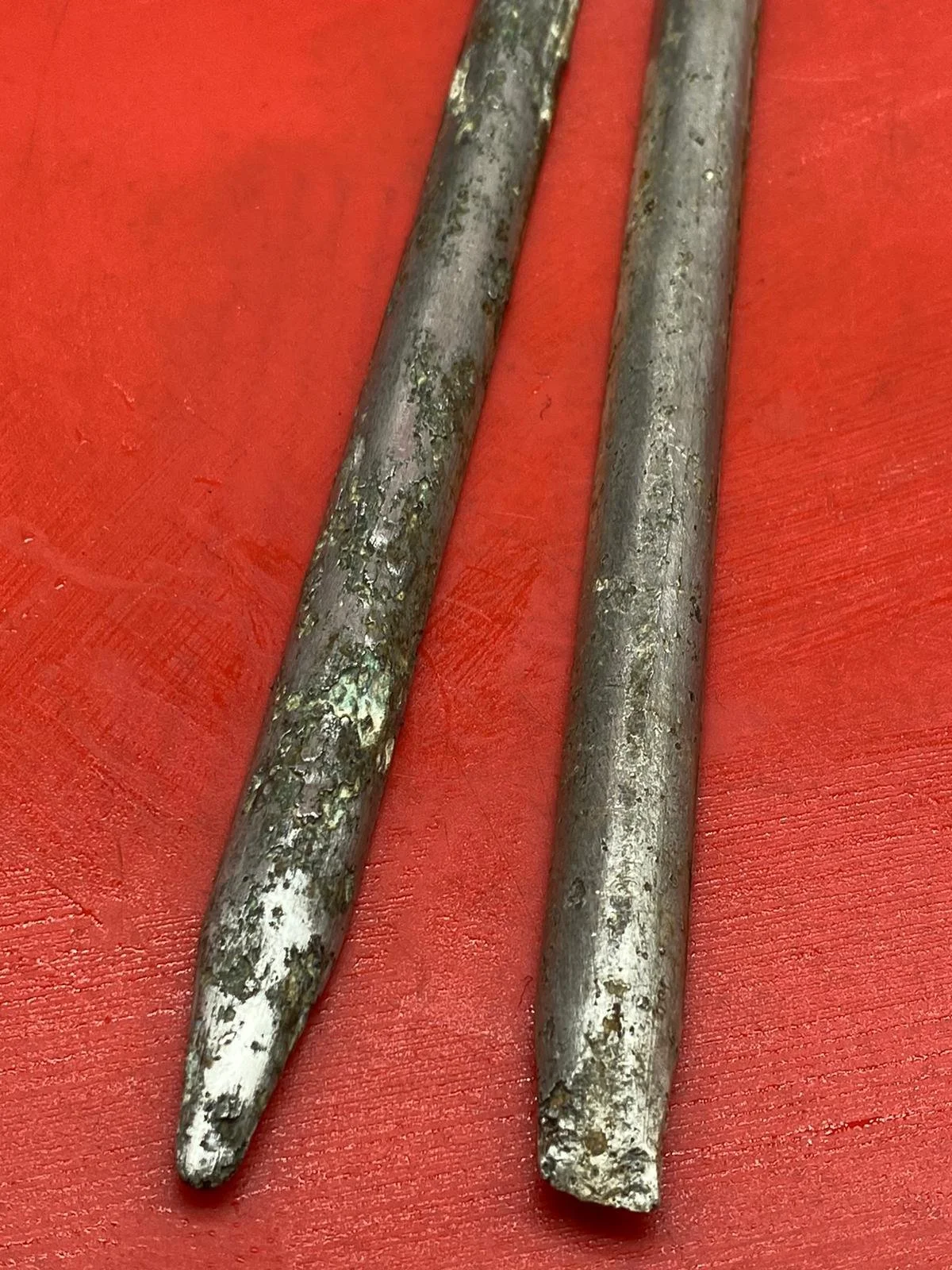 Image 5 of 8
Image 5 of 8

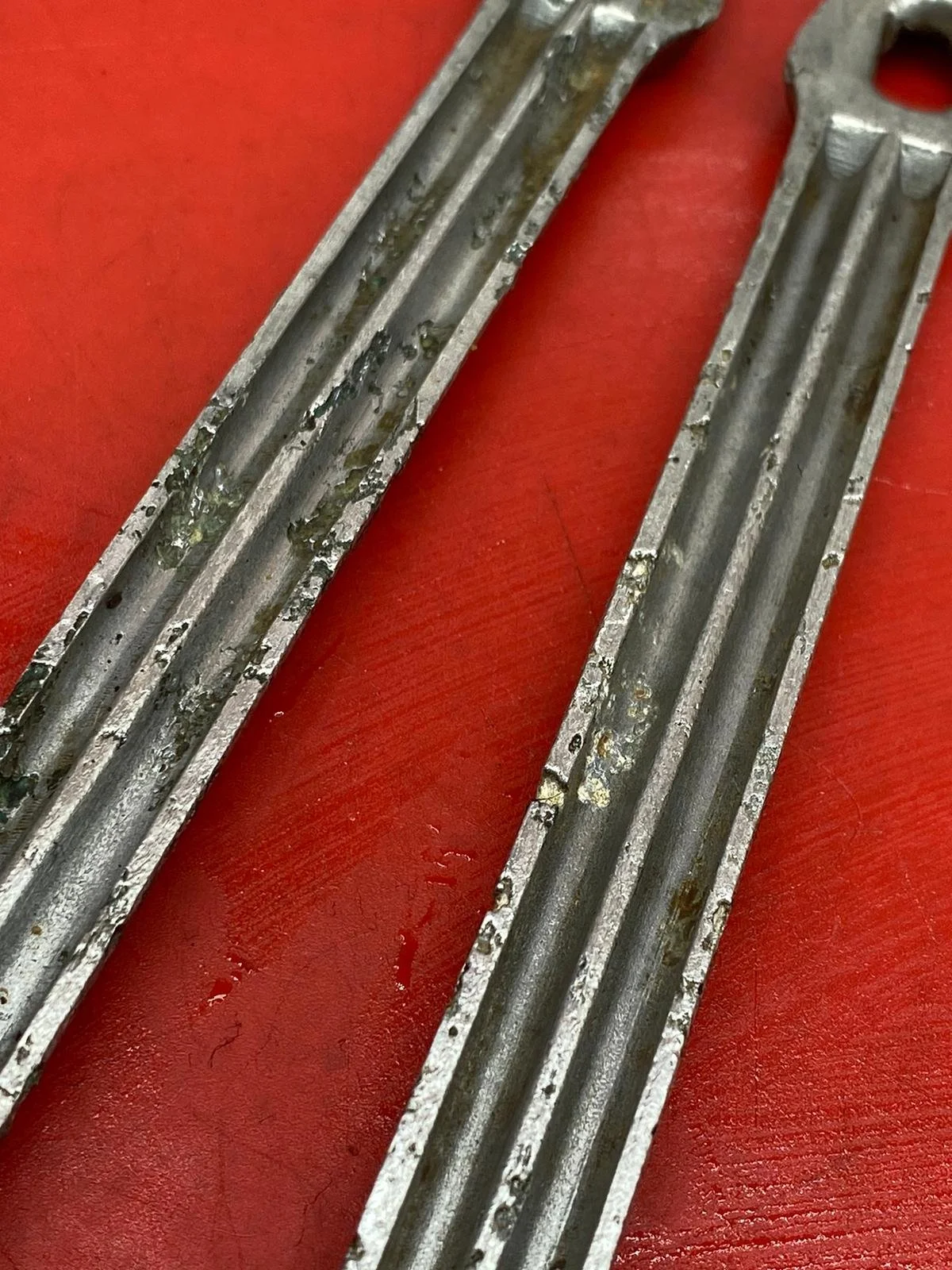 Image 6 of 8
Image 6 of 8

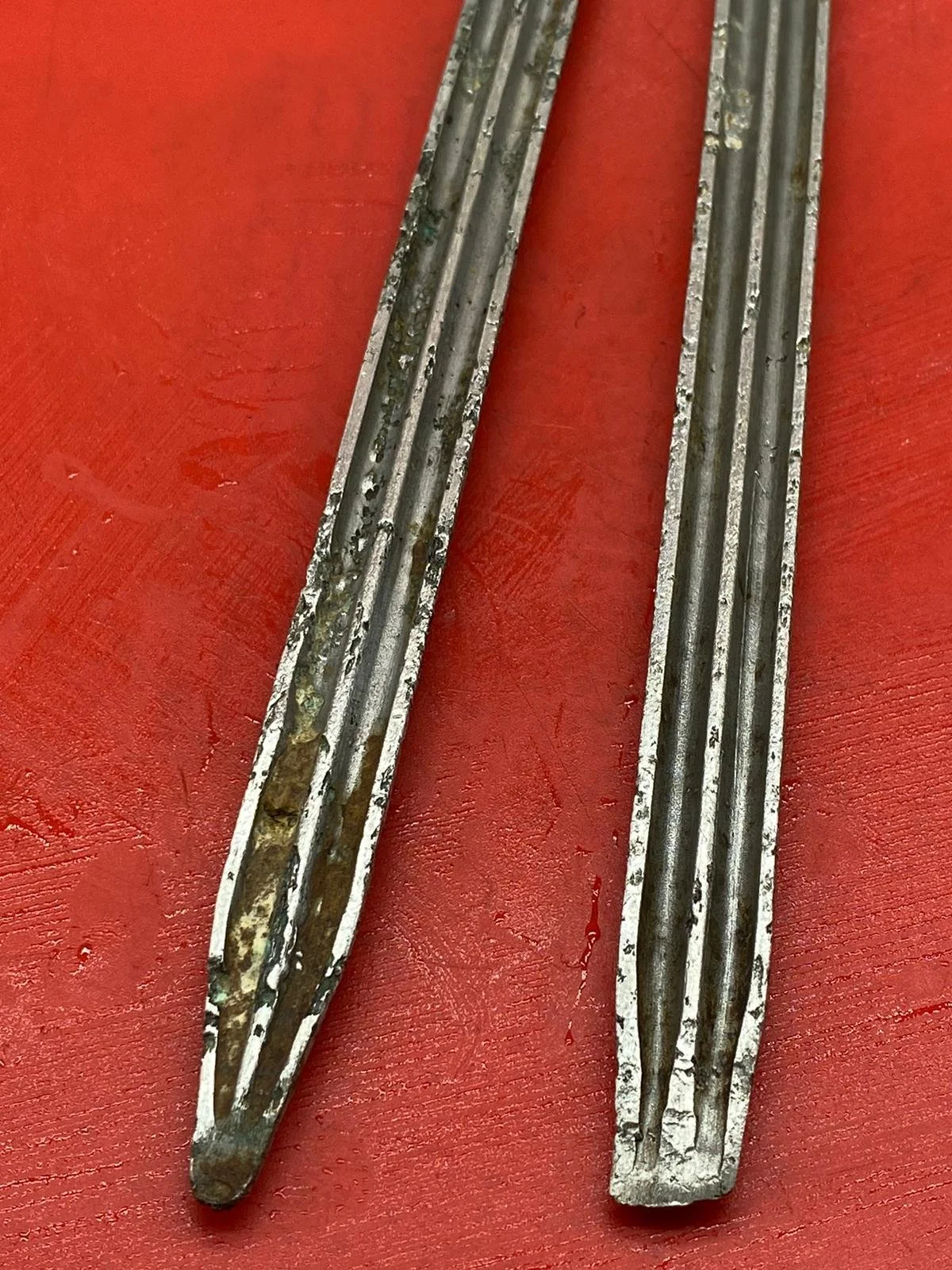 Image 7 of 8
Image 7 of 8

 Image 8 of 8
Image 8 of 8









German Army zeltbahn tent pegs maker marked both dated 1939 recovered from Stalag 344, the German POW camp for Allied soldiers located in the village of Lamsdorf, Silesia (Southwestern Poland)
This is part of a group of relics recovered from the site of an old German prisoner of war camp that held Allied soldiers captured early in World War II. This lot consists of a pair of German Army issue Zeltbahn tent pegs, both maker-marked and dated 1939.
The pegs are made of aluminium and remain in solid relic condition, retaining their original colour. They are not breaking apart and have been carefully cleaned, making them ideal for display or any collection.
These pegs were recovered from Stalag 344, the German POW camp for Allied soldiers located in the village of Lamsdorf, Silesia (Southwestern Poland). The lot comes with two laminated A5 information cards with photographs.
Stalag 344 was originally used in World War I and closed after the war, reopening in 1939 to house Polish prisoners following the German invasion of Poland. Over the course of World War II, approximately 100,000 prisoners from 16 different Allied nations including Great Britain, France, Russia, and the USA passed through the camp.
In 1941, a separate camp, Stalag 344-F, was established nearby to house Soviet prisoners. By 1943, the Lamsdorf camp was split, with many prisoners (and Arbeitskommando) transferred to new base camps, Stalag C Sagan and Stalag D Teschen, while the Lamsdorf base camp was renumbered Stalag 344. The Soviet Army reached the camp on 17 March 1945.
By 1943, the nearby camp known for the Great Escape of Allied flight personnel, Stalag Luft III in Sagan, had become overcrowded. Approximately 1,000 mostly non-commissioned flight personnel were transferred to Lamsdorf. A separate area was fenced off, designated Stalag Luft VIII-B, effectively creating a �camp within a camp,� with all food still provided by kitchens operated by personnel in the main camp.
This is part of a group of relics recovered from the site of an old German prisoner of war camp that held Allied soldiers captured early in World War II. This lot consists of a pair of German Army issue Zeltbahn tent pegs, both maker-marked and dated 1939.
The pegs are made of aluminium and remain in solid relic condition, retaining their original colour. They are not breaking apart and have been carefully cleaned, making them ideal for display or any collection.
These pegs were recovered from Stalag 344, the German POW camp for Allied soldiers located in the village of Lamsdorf, Silesia (Southwestern Poland). The lot comes with two laminated A5 information cards with photographs.
Stalag 344 was originally used in World War I and closed after the war, reopening in 1939 to house Polish prisoners following the German invasion of Poland. Over the course of World War II, approximately 100,000 prisoners from 16 different Allied nations including Great Britain, France, Russia, and the USA passed through the camp.
In 1941, a separate camp, Stalag 344-F, was established nearby to house Soviet prisoners. By 1943, the Lamsdorf camp was split, with many prisoners (and Arbeitskommando) transferred to new base camps, Stalag C Sagan and Stalag D Teschen, while the Lamsdorf base camp was renumbered Stalag 344. The Soviet Army reached the camp on 17 March 1945.
By 1943, the nearby camp known for the Great Escape of Allied flight personnel, Stalag Luft III in Sagan, had become overcrowded. Approximately 1,000 mostly non-commissioned flight personnel were transferred to Lamsdorf. A separate area was fenced off, designated Stalag Luft VIII-B, effectively creating a �camp within a camp,� with all food still provided by kitchens operated by personnel in the main camp.
